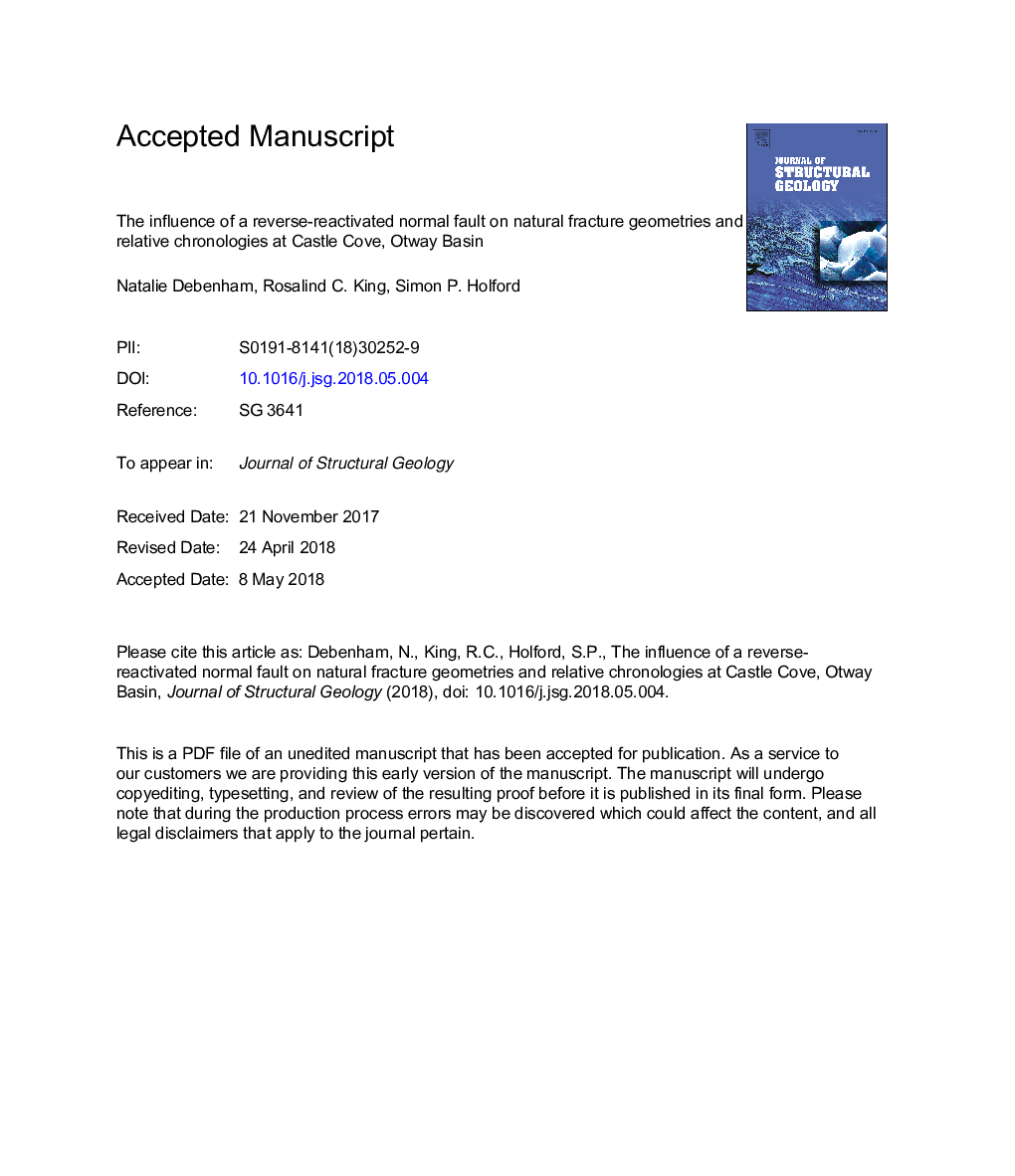| Article ID | Journal | Published Year | Pages | File Type |
|---|---|---|---|---|
| 8914407 | Journal of Structural Geology | 2018 | 50 Pages |
Abstract
Despite the ubiquity of normal faults that have undergone compressional inversion, documentation of the structural history of natural fractures around these structures is limited. In this paper, we investigate the geometries and relative chronologies of natural fractures adjacent to a reverse-reactivated normal fault, the Castle Cove Fault in the Otway Basin, southeast Australia. Local variations in strain resulted in greater deformation within the fault damage zone closer to the fault. Structural mapping within the damage zone reveals a complex tectonic history recording both regional and local perturbations in stress and a total of 11 fracture sets were identified, with three sets geometrically related to the Castle Cove Fault. The remaining fracture sets formed in response to local stresses at Castle Cove. Rifting in the late Cretaceous resulted in normal movement of the Castle Cove Fault and associated rollover folding, and the formation of the largest fracture set. Reverse-reactivation of the fault and associated anticlinal folding occurred during late Miocene to Pliocene compression. Rollover folding may have provided structural traps if seals were not breached by fractures, however anticlinal folding likely post-dated the main episodes of hydrocarbon generation and migration in the region. This study highlights the need to conduct careful reconstruction of the structural histories of fault zones that experienced complex reactivation histories when attempting to define off-fault fluid flow properties.
Related Topics
Physical Sciences and Engineering
Earth and Planetary Sciences
Geology
Authors
Natalie Debenham, Rosalind C. King, Simon P. Holford,
